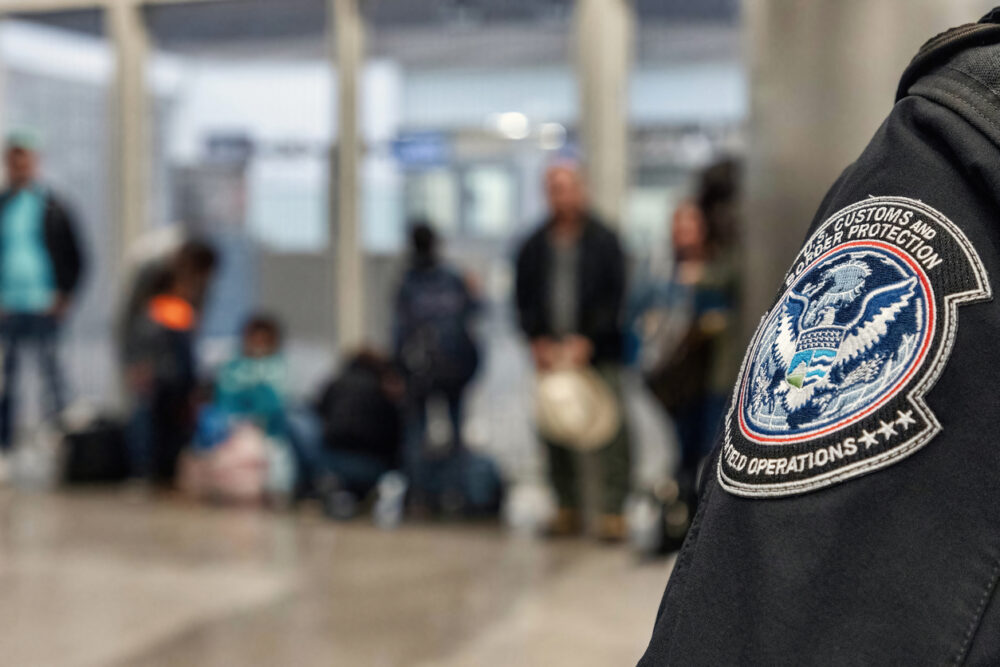No matter how strict the laws get, the demand never really goes away.

People love to argue about undocumented workers, but most of the loudest voices skip over one inconvenient truth—America has always relied on them, and probably always will. It’s not just about immigration policy or border security. The real story is buried in economics, labor demands, and a workforce structure that quietly depends on people without legal papers to keep things running. Take them away, and whole industries would wobble fast.
Undocumented workers aren’t some accidental byproduct of bad enforcement—they’re a built-in feature of how the system has evolved. They show up where legal workers won’t, stay quiet in jobs that don’t offer protection, and help keep costs low in ways few people want to admit. Politicians might make big promises to “solve” the issue, but the reasons behind it run deeper than speeches and slogans. These ten truths explain why undocumented workers aren’t going anywhere, no matter who’s in charge.
1. Some industries depend on cheap and flexible labor.

Construction, agriculture, hospitality, and food service don’t just prefer low-wage workers—they rely on them, according to Miriam Jordan at the The New York Times. These sectors often involve long hours, tough conditions, and seasonal demand that make it hard to attract citizens or legal residents. Undocumented workers often fill that gap without complaint because they need the income and have fewer job options. Their willingness to accept these conditions keeps costs low and schedules running.
Employers aren’t blind to this dynamic. Many hire undocumented labor off the books because it’s easier and cheaper. While it’s technically illegal, enforcement is inconsistent and usually focused on the workers—not the businesses. That imbalance creates a shadow labor force that’s quietly indispensable. As long as certain jobs stay hard, dirty, and low-paying, the demand for undocumented workers will stay strong.
2. Enforcement efforts are inconsistent and full of loopholes.

The U.S. government spends billions on border security and immigration enforcement, but the reality on the ground is full of cracks, as reported by the experts at the Council on Foreign Relations. Workplace raids happen in waves, but they’re unpredictable and limited in scope. Many employers never get audited, and even when they do, the penalties are often a slap on the wrist. That kind of spotty enforcement makes the risk feel manageable—especially when the rewards are high.
There are also legal gray areas that make it easier for people to work without documents. Fake Social Security numbers, identity sharing, or “don’t ask, don’t tell” policies let both workers and businesses skirt the rules. Without a coordinated national approach, enforcement varies wildly between states, industries, and political climates. This patchwork system sends mixed signals and makes it easier for undocumented workers to find—and keep—jobs despite their status.
3. Many undocumented immigrants overstay legal visas.

Contrary to popular belief, not all undocumented workers sneak across borders in the dead of night. A huge percentage arrive legally—on tourist, student, or work visas—and simply stay after those visas expire. Once they’ve settled in, found jobs, and built relationships, going home becomes a far less appealing option. For many, the risk of staying illegally feels smaller than the risk of leaving and starting over, as stated by the authorities at the Pew Research Center.
Because visa overstays are harder to track than illegal crossings, enforcement is less aggressive. These workers often blend into cities and suburbs, hold steady jobs, and avoid trouble. They may not look or act undocumented, which makes them harder to spot and easier for employers to hire. As long as the visa system remains outdated and full of cracks, this pipeline will continue feeding the undocumented labor pool.
4. There’s a mismatch between available jobs and legal labor.

There’s no shortage of low-skill, low-wage jobs in America. But there’s often a shortage of legal residents willing to take them—especially in rural areas or industries with harsh conditions. At the same time, the legal immigration system doesn’t provide nearly enough work visas to meet the real demand. That creates a gap that undocumented workers step into out of necessity.
Employers are constantly looking for people to clean hotel rooms, pick produce, landscape lawns, or work kitchen shifts. But getting legal labor for those roles is tough, especially when other sectors offer better pay or benefits. The immigration system moves slowly, with quotas and caps that don’t match actual needs. Until the labor supply and legal frameworks are better aligned, the gap will stay open—and undocumented workers will keep filling it.
5. Economic conditions push people to take big risks.

Many undocumented workers don’t come to the U.S. on a whim. They’re escaping grinding poverty, violence, or corruption in their home countries. For them, working illegally in America isn’t just a better option—it’s often the only one that offers a shot at survival. When wages at home are a fraction of what they can earn here in a week, the risk of crossing a border or overstaying a visa feels worth it.
This economic pressure doesn’t just disappear with stricter enforcement. As long as global inequalities persist, desperate people will find ways to reach places with opportunity. America, with its demand for labor and relatively high wages, remains a prime destination. Cracking down on the border won’t stop people who are already willing to risk everything just to feed their families.
6. Politicians benefit from talking tough while doing little.

Immigration is a political goldmine. It stirs emotions, draws media attention, and rallies voters on both sides. But solving the issue? That’s a lot less appealing. A real fix would require tough choices that could upset powerful business interests or anger key voting blocs. So instead, politicians often make bold promises during campaigns, then quietly let the status quo continue once they’re in office.
This political posturing keeps undocumented labor in place while giving the illusion of action. Laws get passed, headlines are made, but the underlying systems stay largely untouched. That’s because cracking down too hard could tank parts of the economy, and reforming the system is messy, expensive, and politically risky. So undocumented workers remain stuck in limbo, used as pawns in a never-ending debate.
7. Families, communities, and roots make people stay.

Once undocumented immigrants are here, many build lives that make leaving unimaginable. They fall in love, have kids, find jobs, and join communities. Over time, they become deeply rooted—even without legal status. For these individuals, going “back home” isn’t just a geographic move—it’s a massive emotional and financial upheaval that disrupts everything they’ve built.
This creates a population of undocumented people who aren’t just passing through—they’re staying put, quietly contributing, and hoping for a chance to legalize their status someday. Employers, neighbors, and even local officials often know and support them. These social ties make mass removal both logistically and morally complicated. As long as these roots keep growing, the undocumented population will never fully disappear.
8. Some employers actively prefer undocumented workers.

It’s not just about cheap labor—it’s about control. Undocumented workers are less likely to unionize, file complaints, or demand better treatment. Employers looking to cut corners or avoid regulations often prefer workers who won’t rock the boat. That creates a power imbalance that some businesses use to their advantage, even if it’s under the radar.
This quiet preference keeps the undocumented labor pipeline open, even when legal workers are available. When people fear deportation, they’re easier to manipulate. That makes them attractive to certain employers who prioritize profits over ethics. As long as those incentives remain, there will always be a market for undocumented labor—no matter how many laws are on the books.
9. Immigration reform keeps stalling out.

Everyone agrees the system is broken—but no one can agree on how to fix it. Comprehensive immigration reform has been floated, debated, and abandoned more times than anyone can count. The political divide is deep, and even when there’s consensus on certain pieces, the larger package always seems to fall apart. Without reform, the country is left managing a 21st-century economy with a 20th-century immigration system.
This paralysis leaves millions in limbo and employers scrambling for solutions. Work visas are outdated, quotas are arbitrary, and legal pathways are too narrow. Until lawmakers come together to modernize the system, the undocumented workforce will remain a permanent fixture. Band-aid solutions won’t fix a problem that’s baked into the structure—and that’s why it keeps coming back, year after year.
10. America’s economy quietly benefits from undocumented labor.

It may not show up in campaign ads, but undocumented workers make a measurable impact on the U.S. economy. They contribute billions in taxes, keep prices down in key industries, and often take jobs that would otherwise go unfilled. Their labor helps small businesses thrive, keeps shelves stocked, and makes certain services more affordable for everyone else.
Despite the controversy, the truth is that undocumented workers aren’t just surviving in the margins—they’re actively propping up parts of the system. Many pay into Social Security using fake numbers they’ll never benefit from. Others spend their income locally, supporting schools, stores, and services. Their presence may be politically divisive, but economically, it’s hard to argue they don’t play a critical role. That quiet contribution ensures they’ll never be fully pushed out—because the system, in many ways, is built to keep them in.
